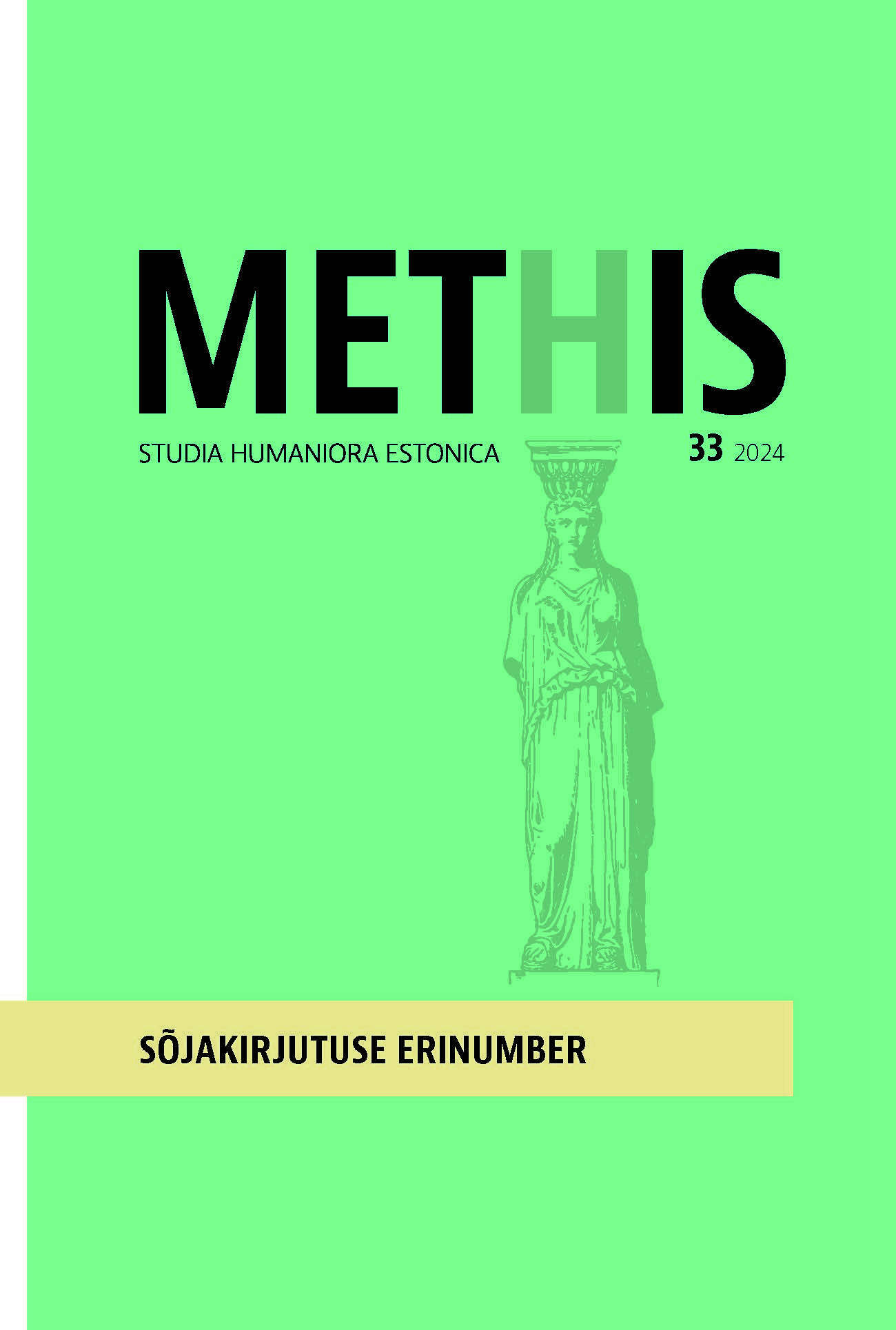Arved Viirlaiu romaanikangelase Eerik Hormi lugu versus Eerik Heine elulugu / The story of Eerik Horm, the hero of Arved Viirlaid’s novels, versus the life of Eerik Heine
DOI:
https://doi.org/10.7592/methis.v26i33.24132Keywords:
resistance struggle in Estonia, Soviet repressions, Arved Viirlaid, Eerik Heine, refugee literature, vastupanuvõitlus Eestis, Nõukogude repressioonid, pagulaskirjandusAbstract
Teesid: Arved Viirlaid kirjutas oma romaanikangelase, Nõukogude okupatsiooni aegse vastupanuvõitleja Eerik Hormi lood Eerik Heine (1919–2008) jutustuste põhjal. Hiljem hakati Eerik Hormi lugu omakorda Eerik Heine elulooks pidama. Käesoleva artikli eesmärk on võrrelda Viirlaiu teoste ajaloofakte Rahvusarhiivi allikatega ja otsida vastuseid küsimusele, kes oli Eerik Heine. Vaatluse all on kolm Eerik Hormi ja Eerik Heine lugude põhiküsimust: vangistamine 1940 ja vabastamine Läände saatmisega 1941, vangistamine ja põgenemine 1948 ning vangistamine 1950.
Arved Viirlaid (1922-2015), who took part in the Second World War, escaped from Soviet-occupied Estonia to the West in autumn of 1944. His contribution as a refugee writer is the narration of Estonians’ post-war armed resistance in occupied Estonia, and their experiences in Siberian prison camps. Eerik Horm became the protagonist of Viirlaid’s works appearing in the novels Vaim ja ahelad (1961), Kustuvad tuled (1965a), Sadu jõkke (1965b), Kes tappis Eerik Hormi?(1974) and Surnud ei loe (1975). Eerik Heine (1919-2008), an Estonian who told him about his life during and after the Second World War, served as a model for the character.
Because of Viirlaid’s novels, Eerik Heine’s life story has been much talked about. Some Estonian exiles, led by the soldier Alfons Rebas’ and the chairman of the Estonian Freedom Fighters’ Association Jüri Raus, did not believe Eerik Heine’s version of escaping Russian imprisonment and fleeing to the West. According to the CIA, Heine was a KGB agent sent to the West from the Soviet Union. Heine was investigated in the USA between 1964 and 1971, although no definitive truth was revealed.
Both the fictional character Eerik Horm and his alleged prototype Eerik Heine joined the resistance movement in the summer of 1940, when Estonia was occupied by the USSR. On the basis of the present information we can also hypothesise that the NKVD itself, with the help of its collaborators, may have organised a resistance group that used provocation to control the minds of young people and find potential opponents of the Soviet regime.
The fictional parents of Eerik Horm left Estonia as so-called German emigrants, which is why he too was released from the NKVD in the spring of 1941. Eerik Heine’s parents were indeed allowed to leave Estonia for Germany in 1941 as emigrants. On March 18, 1941, the NKVD also decided to send Eerik Heine to Germany on the first outgoing transport, as his parents had been allowed to resettle in Germany. The NKVD made this decision despite the conclusion of their investigation into Heine’s participation in a youth organisation that aimed to overthrow Soviet rule in Estonia.
After leaving Estonia in August 1941, Eerik Horm joined the German army and took part in the Second World War, although no further details are provided. Erik Heine started his military career with the Ostland police battalion in Ukraine and graduated in the summer of 1944 with the 20th Estonian SS Division. He was allegedly imprisoned on August 25th 1944 and sent to a prison camp in Siberia, from where he escaped and returned to Estonia. There is no documented evidence of this.
After two years in hiding, Eerik Horm was arrested again in 1948 in Viljandi for helping fellow prisoner Maks, now a truck driver in Tallinn, to obtain new documents. Horm himself had false documents in the name of Priit Põldmaa. In Eerik Heine’s biography, Ilmar Pallo, who worked at the Tallinn Car Repair Plant, was the inspiration for Maks. According to Pallo, he killed a man with his car in Tallinn in August of 1947, but was taken to the Tallinn’s Polyclinic instead. In the course of the incident, some documents went missing and he had to go into hiding for fear of being punished for the accident. Eerik Heine helped him get new documents for which he went to the Viljandi Military Commissariat. To prove his identity he used Priit Põltsamaa’s documents. Heine was arrested but managed to escape. The real Priit Põltsamaa was also soon arrested and sentenced to 25 years in prison.
Eerik Horm and Eerik Heine were both arrested in Tallinn in July 1950 at the National Song Festival. While Horm, the hero of the novel, did not betray his companions, Heine spoke openly at his first interrogation on July 22nd 1940 about several people who had helped him between 1947 and 1950. In Eerik Horm’s story, the interrogators were only interested in the Estonian partisan uprising, which Horm said almost nothing about. Both Horm and Heine were released from the prison camp in the autumn of 1956 and sent to the West as "Germans".


